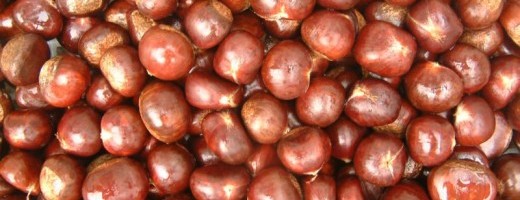
Chestnuts belong to the family Fagaceae, which also includes oaks and beeches. The four main species are commonly known as European, Chinese, Japanese, and American chestnuts, some species called chinkapin or chinquapin:[4]
European species sweet chestnut (Castanea sativa) (also called “Spanish chestnut” in the US) is the only European species of chestnut, though it was successfully introduced to the Himalayas and other temperate parts of Asia. Unrelated but externally similar species of horse chestnut are abundant around Europe.
Asiatic species Castanea crenata (Japanese chestnut), Castanea mollissima (Chinese chestnut), Castanea davidii (China), Castanea henryi (Chinese chinkapin, also called Henry’s chestnut – China) and Castanea seguinii (also called Seguin’s chestnut – China)
American species These include Castanea dentata (American chestnut – Eastern states), Castanea pumila (American- or Allegheny chinkapin, also known as “dwarf chestnut” – Eastern states), Castanea alnifolia (Southern states), Castanea ashei (Southern states), Castanea floridana (Southern states) and Castanea paupispina (Southern states).[5][6]
Chestnuts should not be confused with horse chestnuts (genus Aesculus), which are not related to Castanea and are named for producing nuts of similar appearance, but which are mildly poisonous to humans, nor should they be confused with water chestnut (family Cyperaceae), which are also unrelated to Castanea and are tubers of similar taste from an aquatic herbaceous plant.[7][8] Other trees commonly mistaken for the chestnut tree are the chestnut oak (Quercus prinus) and the American beech (Fagus grandifolia).[9][10]